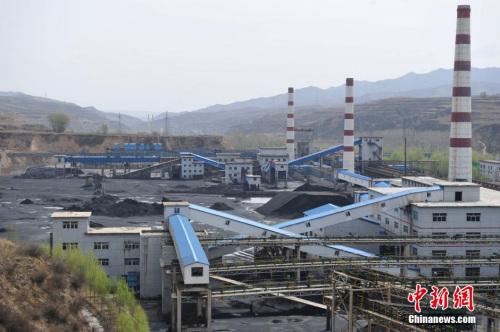

 |
Since the central government has put more emphasis on supply-side structural reform, more than 10 provinces so far have issued specific plans and special programs to further the cause, chicanes.com reported on Thursday.
Efforts are mainly focused on cutting overcapacity, de-stocking, de-leveraging, reducing costs and identifying growth areas, which were all listed as major tasks of the reform. Many of the provinces have made specific objectives of cutting overcapacity and de-stocking. Also, in order to reduce inventory of the property market, several provinces plan to encourage more farmers to buy houses.
Among those provinces, Shandong, Anhui, Zhejiang, Sichuan, Guizhou, Guangdong and Hubei provinces, along with Chongqing, have formulated comprehensive plans. Jiangsu, Gansu, Shanxi and Qinghai provinces, together with Shanghai and Tianjin, have launched plans targeting specific sectors. A meeting held by the Central Leading Group on Financial and Economic Affairs has already recognized their efforts.
Within those plans, de-capacity is regarded as a top priority, and many plans focused on the steel and mining industries. For instance, Hubei province planned to reduce 2 million tons of excess steel and 8 million tons of excess coal in the next three years. Jiangsu province promised that 6 million tons of coal and 4 million tons of steel will be reduced before the end of 2016. In addition, some provincial governments made timetables for the elimination of "zombie enterprises," as well as unprofitable and debt-laden enterprises.
Many provinces also formulated specific objectives for de-stocking the property market, including the promotion of leasing and lowering housing prices. According to the National Bureau of Statistics, the area of unsold housing in China during the month of April reached 727 million square meters.
In Shandong province, farmers can enjoy subsidies for deed taxes and other charges on their first urban housing purchase. In regions with a lot of stock, they can receive subsidies of between 3 and 10 percent of their spending.
With regards to de-leveraging, many provinces have prioritized expanding direct investment, reducing non-performing loan ratios and lowering financial risks. Guangdong proposed that, before the end of 2018, the leverage ratio of securities and future goods institutions will meet the requirements of regulation systems. Meanwhile, by that time, direct financing will account for more than 35 percent of the total financing amount.
In order to lower the cost of enterprises, provinces have also tried to reduce the burden of local companies by lowering transaction costs, labor costs, taxes, and the costs of insurance, power and logistics.
Southwestern Guizhou province, for instance, will substantially lower the price of electricity for industrial use. In addition, 70 billion yuan ($10.1 billion) will be set aside for Guizhou enterprises to help lower costs further.
Considering developmental imbalances around the country, each government has made plans to offset its own individual weaknesses. Zhejiang province plans to strengthen its weak links of ecology, rural construction, infrastructure, public service and technological innovation, promising to promote science and technology. By 2020, spending on research and development in the province will account for about 2.8 percent of its GDP.
 French girl ties the knot with Chinese boy
French girl ties the knot with Chinese boy Beijing Style: ready for bare legs
Beijing Style: ready for bare legs Century-old station sees railyway evolution
Century-old station sees railyway evolution Enthusiasts perform Kung Fu at Wudang Mountain
Enthusiasts perform Kung Fu at Wudang Mountain Stunning photos of China's fighter jets in drill
Stunning photos of China's fighter jets in drill Monk's mummified body to be made into a gold Buddha statue
Monk's mummified body to be made into a gold Buddha statue Former Chinese solider of the French Foreign Legion seeks wife online
Former Chinese solider of the French Foreign Legion seeks wife online Asia's longest and highest suspension bridge to open to traffic
Asia's longest and highest suspension bridge to open to traffic China's first interactive robot looks like a beauty
China's first interactive robot looks like a beauty Top 20 hottest women in the world in 2014
Top 20 hottest women in the world in 2014 Top 10 hardest languages to learn
Top 10 hardest languages to learn 10 Chinese female stars with most beautiful faces
10 Chinese female stars with most beautiful faces China’s Top 10 Unique Bridges, Highways and Roads
China’s Top 10 Unique Bridges, Highways and Roads Hong Kong opposition should seize the moment
Hong Kong opposition should seize the moment Trump’s anti-immigrant rhetoric strikes a chord with Chinese Americans
Trump’s anti-immigrant rhetoric strikes a chord with Chinese Americans China rejects latest US steel measures
China rejects latest US steel measures Is the wage gap between expats and locals a function of the market – or plain old discrimination?
Is the wage gap between expats and locals a function of the market – or plain old discrimination?Day|Week